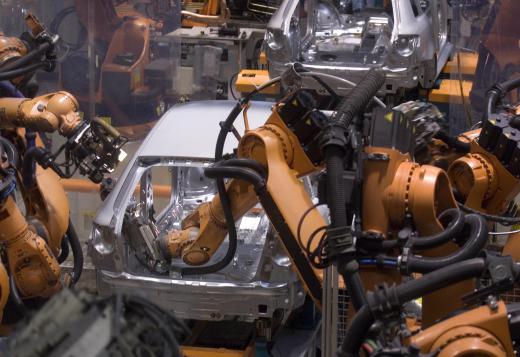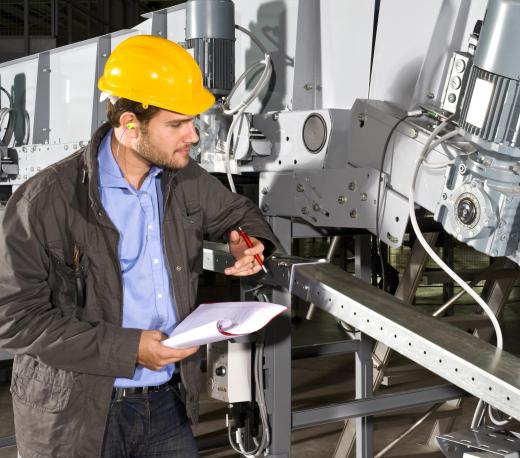An assembly machine is a type of industrial or manufacturing equipment used to construct a variety of products. Assembly machines take many different forms, from large-scale systems used to build cars, to smaller units designed to assemble computer chips or other microscopic items. The average assembly machine operates under the direction of a specialized computer program that automates the production process. Some assembly processes include human workers, while others are fully automated and rely solely on robotic and machine labor.
The most basic assembly machine design relies on dial indexing, where a rotating disc distributes products or materials around a series of stations. In-line assembly machinery features a belt-driven system to move materials along an assembly line, while platform machines are often used for large-scale assembly or production. Continuous motion machines are the most complex, but also offer the highest degree of customization as well as the most efficient method of mass production.

Most assembly machines must be custom built to the specifications of an individual manufacturer. Some similar manufacturers may rely on standardized models, while others require more customized devices. Each machine also requires a specialized computer program to direct the machine through the production process. This program must be written and installed by a person with advanced software and programming skills to ensure it will operate as intended.

In a basic assembly machine, a series of belts or tubes carry materials from the start of the assembly process to the finish. Hoppers or feeders supply the required parts in the quantities specified by the software program. Vacuum systems, robotic arms, or pneumatic tubes lift or manipulate the object during production, then pack the finished products into packaging for shipping and delivery. Humans may be needed to oversee the process or replenish materials in some applications.
Assembly machine technology allows for rapid production with little labor expense. These machines allow manufacturers to produce a large quantity of materials in a small space, and often allow them to produce a much higher volume than what would be possible with labor alone. Assembly machines also provide precise assembly of very small or delicate items that may be too difficult for humans to work with.
Because of their customized nature, an assembly machine may feature a very high upfront cost that could be out of reach of small producers. It's also possible for materials to get tangled or damaged within these machines in some cases. In some cases, objects may to too difficult or simply not cost-effective to manufacturer with an assembly machine, making traditional human labor a more desirable option.
